

Kakongo artist. Power Figure (Nkisi Nkondi), 19th century, with 20th century restoration. Wood, iron, glass, resin, kaolin, pigment, plant fiber, cloth, 33 7/8 × 13 3/4 × 11 in. (86 × 34.9 × 27.9 cm). Brooklyn Museum, Museum Expedition 1922, Robert B. Woodward Memorial Fund, 22.1421. Creative Commons-BY (Photo: , 22.1421_overall_PS9.jpg)

Kakongo artist. Power Figure (Nkisi Nkondi), 19th century, with 20th century restoration. Wood, iron, glass, resin, kaolin, pigment, plant fiber, cloth, 33 7/8 × 13 3/4 × 11 in. (86 × 34.9 × 27.9 cm). Brooklyn Museum, Museum Expedition 1922, Robert B. Woodward Memorial Fund, 22.1421. Creative Commons-BY (Photo: Brooklyn Museum, 22.1421_threequarter_PS1.jpg)

Kakongo artist. Power Figure (Nkisi Nkondi), 19th century, with 20th century restoration. Wood, iron, glass, resin, kaolin, pigment, plant fiber, cloth, 33 7/8 × 13 3/4 × 11 in. (86 × 34.9 × 27.9 cm). Brooklyn Museum, Museum Expedition 1922, Robert B. Woodward Memorial Fund, 22.1421. Creative Commons-BY (Photo: , 22.1421_threequarter_right_PS9.jpg)
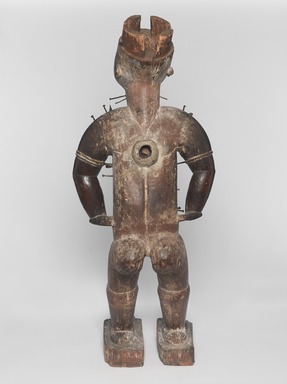
Kakongo artist. Power Figure (Nkisi Nkondi), 19th century, with 20th century restoration. Wood, iron, glass, resin, kaolin, pigment, plant fiber, cloth, 33 7/8 × 13 3/4 × 11 in. (86 × 34.9 × 27.9 cm). Brooklyn Museum, Museum Expedition 1922, Robert B. Woodward Memorial Fund, 22.1421. Creative Commons-BY (Photo: , 22.1421_back_PS9.jpg)

Kakongo artist. Power Figure (Nkisi Nkondi), 19th century, with 20th century restoration. Wood, iron, glass, resin, kaolin, pigment, plant fiber, cloth, 33 7/8 × 13 3/4 × 11 in. (86 × 34.9 × 27.9 cm). Brooklyn Museum, Museum Expedition 1922, Robert B. Woodward Memorial Fund, 22.1421. Creative Commons-BY (Photo: , 22.1421_threequarter_left_PS9.jpg)

Kakongo artist. Power Figure (Nkisi Nkondi), 19th century, with 20th century restoration. Wood, iron, glass, resin, kaolin, pigment, plant fiber, cloth, 33 7/8 × 13 3/4 × 11 in. (86 × 34.9 × 27.9 cm). Brooklyn Museum, Museum Expedition 1922, Robert B. Woodward Memorial Fund, 22.1421. Creative Commons-BY (Photo: Brooklyn Museum, 22.1421_side_SL4.jpg)

Kakongo artist. Power Figure (Nkisi Nkondi), 19th century, with 20th century restoration. Wood, iron, glass, resin, kaolin, pigment, plant fiber, cloth, 33 7/8 × 13 3/4 × 11 in. (86 × 34.9 × 27.9 cm). Brooklyn Museum, Museum Expedition 1922, Robert B. Woodward Memorial Fund, 22.1421. Creative Commons-BY (Photo: Brooklyn Museum, CUR.22.1421_print_front_bw.jpg)

Kakongo artist. Power Figure (Nkisi Nkondi), 19th century, with 20th century restoration. Wood, iron, glass, resin, kaolin, pigment, plant fiber, cloth, 33 7/8 × 13 3/4 × 11 in. (86 × 34.9 × 27.9 cm). Brooklyn Museum, Museum Expedition 1922, Robert B. Woodward Memorial Fund, 22.1421. Creative Commons-BY (Photo: Brooklyn Museum, 22.1421_glass_bw.jpg)

Kakongo artist. Power Figure (Nkisi Nkondi), 19th century, with 20th century restoration. Wood, iron, glass, resin, kaolin, pigment, plant fiber, cloth, 33 7/8 × 13 3/4 × 11 in. (86 × 34.9 × 27.9 cm). Brooklyn Museum, Museum Expedition 1922, Robert B. Woodward Memorial Fund, 22.1421. Creative Commons-BY (Photo: Brooklyn Museum, 22.1421_profile_PS1.jpg)

Kakongo artist. Power Figure (Nkisi Nkondi), 19th century, with 20th century restoration. Wood, iron, glass, resin, kaolin, pigment, plant fiber, cloth, 33 7/8 × 13 3/4 × 11 in. (86 × 34.9 × 27.9 cm). Brooklyn Museum, Museum Expedition 1922, Robert B. Woodward Memorial Fund, 22.1421. Creative Commons-BY (Photo: Brooklyn Museum, 22.1421_SL1.jpg)

Kakongo artist. Power Figure (Nkisi Nkondi), 19th century, with 20th century restoration. Wood, iron, glass, resin, kaolin, pigment, plant fiber, cloth, 33 7/8 × 13 3/4 × 11 in. (86 × 34.9 × 27.9 cm). Brooklyn Museum, Museum Expedition 1922, Robert B. Woodward Memorial Fund, 22.1421. Creative Commons-BY (Photo: Brooklyn Museum, 22.1421_side_bw.jpg)

Kakongo artist. Power Figure (Nkisi Nkondi), 19th century, with 20th century restoration. Wood, iron, glass, resin, kaolin, pigment, plant fiber, cloth, 33 7/8 × 13 3/4 × 11 in. (86 × 34.9 × 27.9 cm). Brooklyn Museum, Museum Expedition 1922, Robert B. Woodward Memorial Fund, 22.1421. Creative Commons-BY (Photo: Brooklyn Museum, 22.1421_threequarter_bw.jpg)

Kakongo artist. Power Figure (Nkisi Nkondi), 19th century, with 20th century restoration. Wood, iron, glass, resin, kaolin, pigment, plant fiber, cloth, 33 7/8 × 13 3/4 × 11 in. (86 × 34.9 × 27.9 cm). Brooklyn Museum, Museum Expedition 1922, Robert B. Woodward Memorial Fund, 22.1421. Creative Commons-BY (Photo: Brooklyn Museum, 22.1421_detail_acetate_bw.jpg)
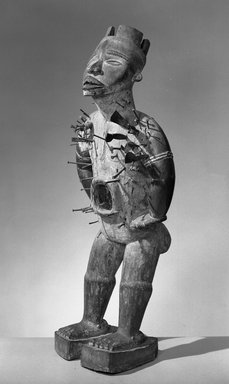
Kakongo artist. Power Figure (Nkisi Nkondi), 19th century, with 20th century restoration. Wood, iron, glass, resin, kaolin, pigment, plant fiber, cloth, 33 7/8 × 13 3/4 × 11 in. (86 × 34.9 × 27.9 cm). Brooklyn Museum, Museum Expedition 1922, Robert B. Woodward Memorial Fund, 22.1421. Creative Commons-BY (Photo: Brooklyn Museum, 22.1421_view4_acetate_bw.jpg)
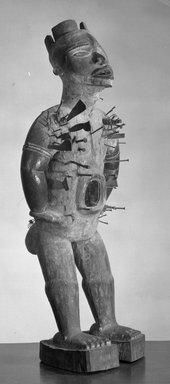
Kakongo artist. Power Figure (Nkisi Nkondi), 19th century, with 20th century restoration. Wood, iron, glass, resin, kaolin, pigment, plant fiber, cloth, 33 7/8 × 13 3/4 × 11 in. (86 × 34.9 × 27.9 cm). Brooklyn Museum, Museum Expedition 1922, Robert B. Woodward Memorial Fund, 22.1421. Creative Commons-BY (Photo: Brooklyn Museum, 22.1421_view5_acetate_bw.jpg)
Power Figure (Nkisi Nkondi)
Arts of Africa
How do we know this? New research on a Kongo nkisi nkondi
This nkisi (power figure) is missing the empowering material from the top of its head, eyes, and stomach and back containers. New research conducted by this exhibition’s curator suggests this work was disempowered before leaving Africa. Close examination was made of the museum’s historic photographs, conservation records, and the work itself. Primary and secondary sources about Kongo art were also consulted. Thus, we can now re-present this work as an example of Kongo anti-colonial resistance.
Visible today, the back container lacks its mirrored cover and (most of) the organic substances that once were inside. The large mirror-covered container on the front was also missing when the Brooklyn Museum bought the sculpture in 1922 (see photo 1). The photograph also shows that the glass covering the left eye was partially missing, along with most of its resin “eyelid.” Because empowering materials often were placed behind an nkisi’s eyes, this implies that someone knowledgeable tried to remove them.
The mirrored container first appeared in a 1936 photograph, suggesting it was restored with a differently shaped replica (see photo 2). X-rays show that the front container is empty. Tests by Brooklyn Museum scientists also showed that the container was attached and painted with plaster; resin and kaolin clay would have been used in Kongo. In the 1920s, museums commonly restored “missing pieces” of works across collections. Here flaking kaolin clay was removed and the surface was smoothed, a museum practice common for African sculptures during the period.
During the colonial era, Africans actively protected their own cultures. Iconoclasm was one way to exercise their agency, removing the magical-religious substances that empowered nkisi. Archival information shows that nkisi now in the collections of other museums were subject to similar acts of iconoclasm: Kongo priests and others deactivated power figures before Europeans confiscated them.



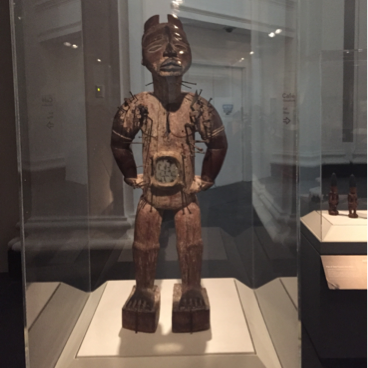
















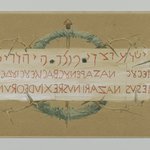

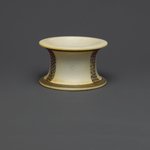



![[Untitled] (Free FAll)](https://d1lfxha3ugu3d4.cloudfront.net/images/opencollection/objects/size2_sq/2007.20_three_quarter_left_PS2.jpg)